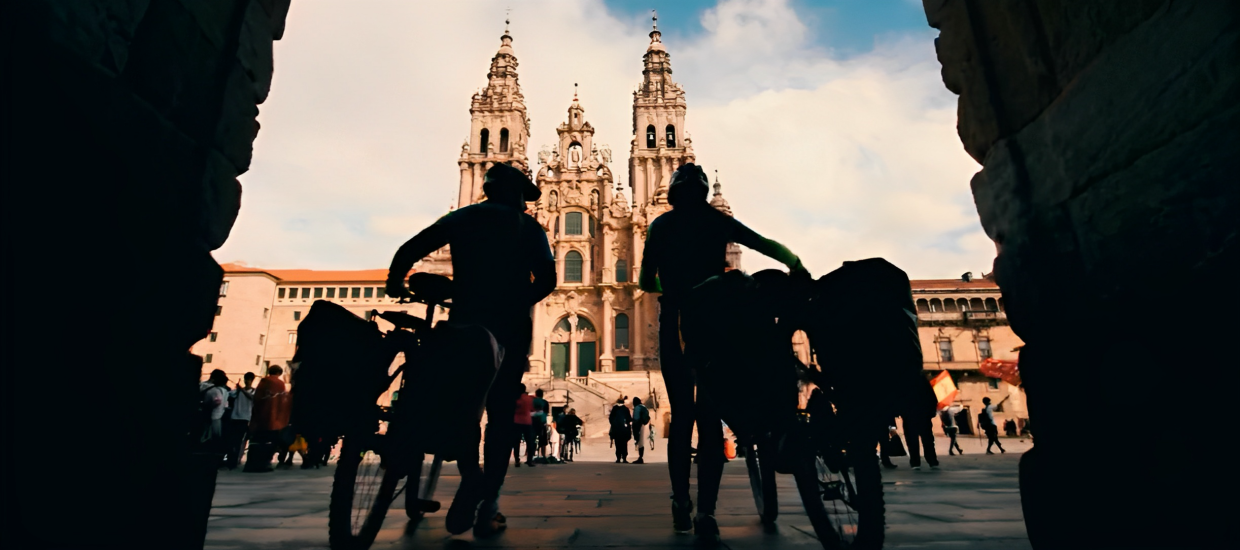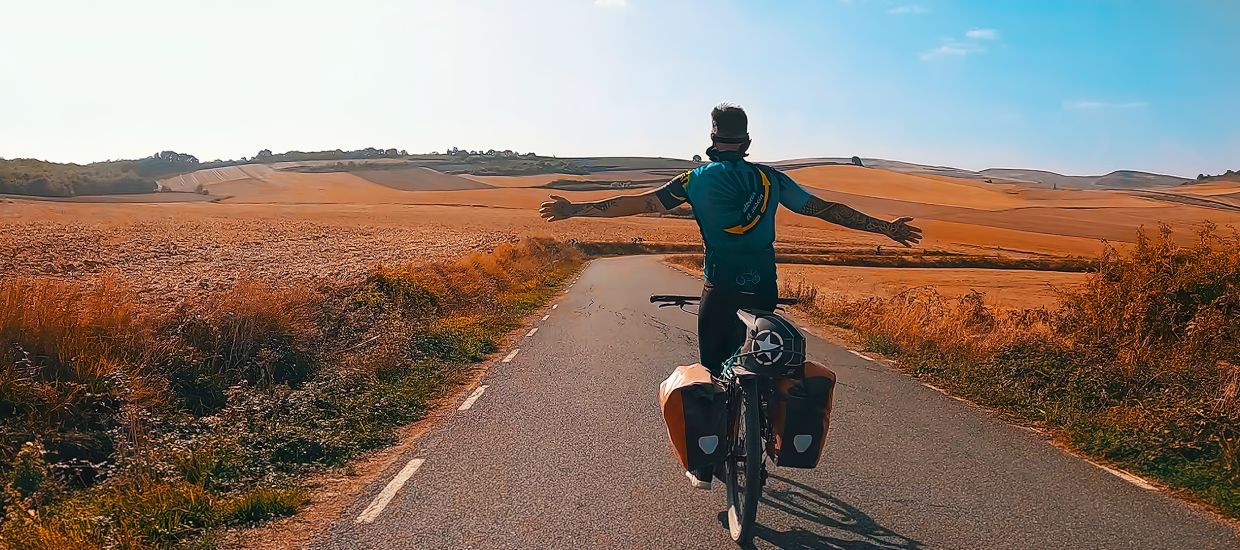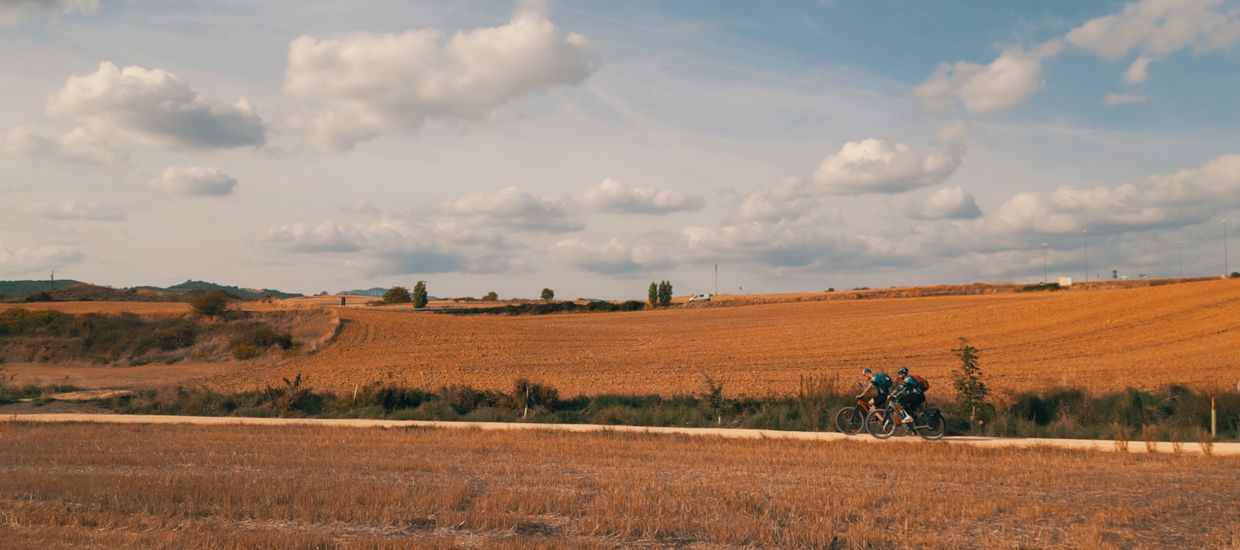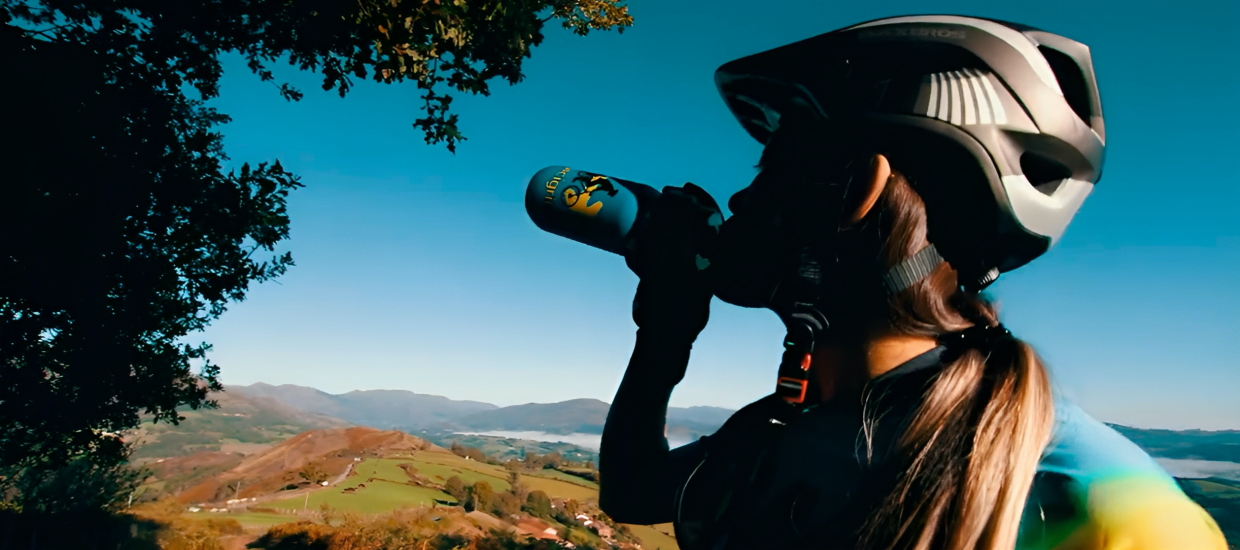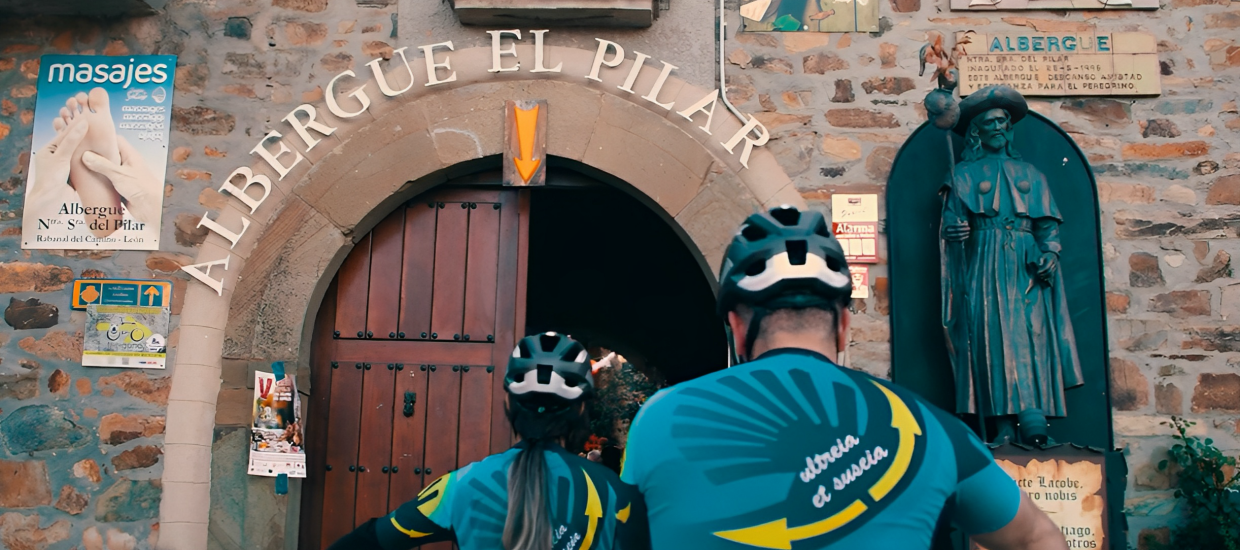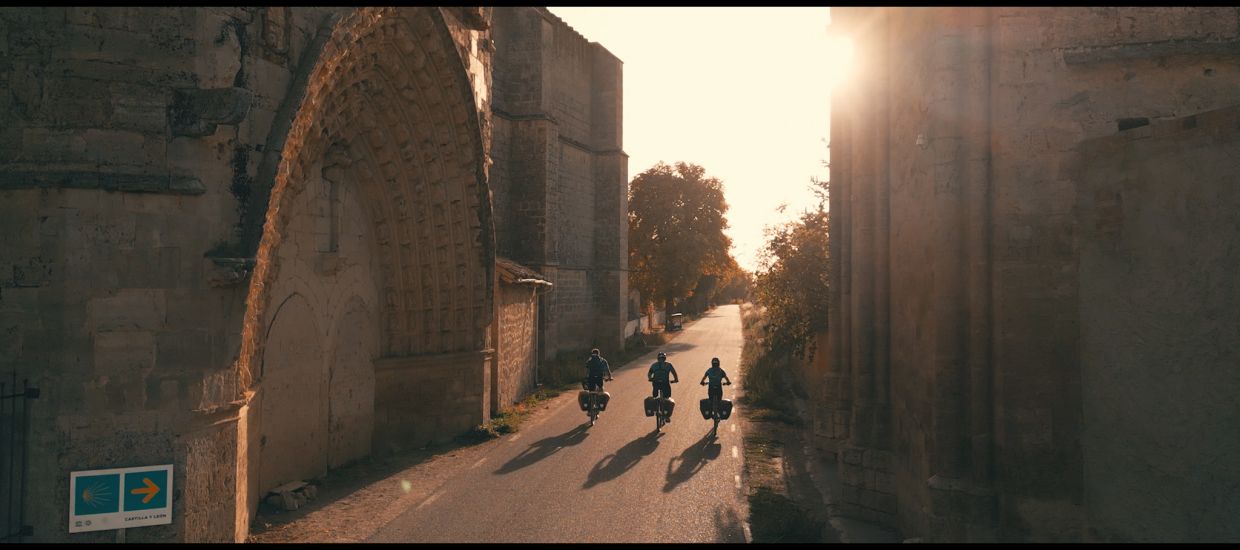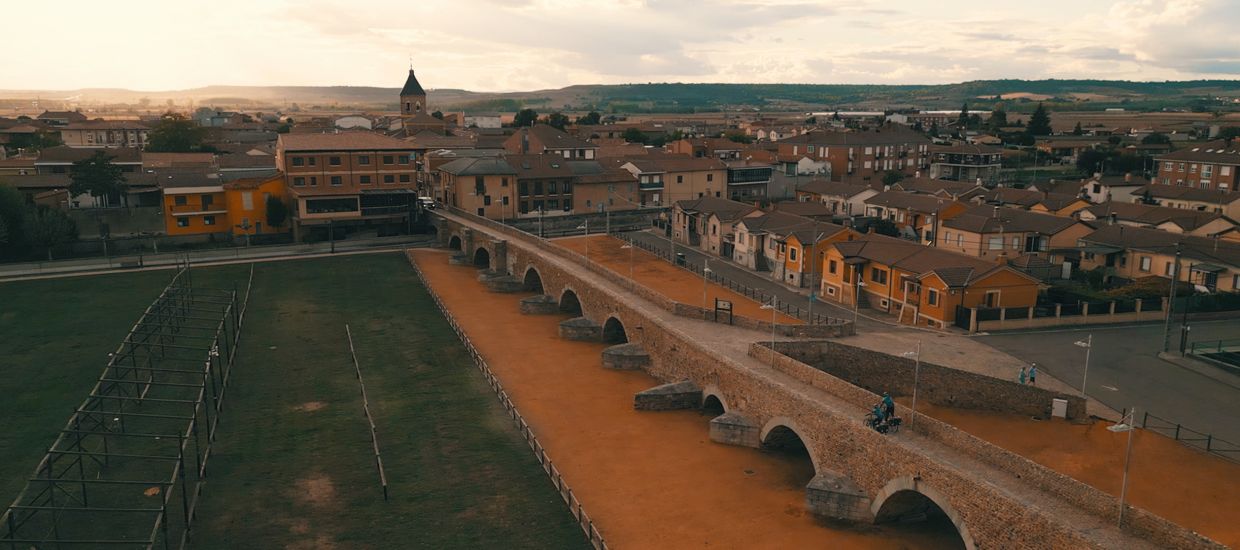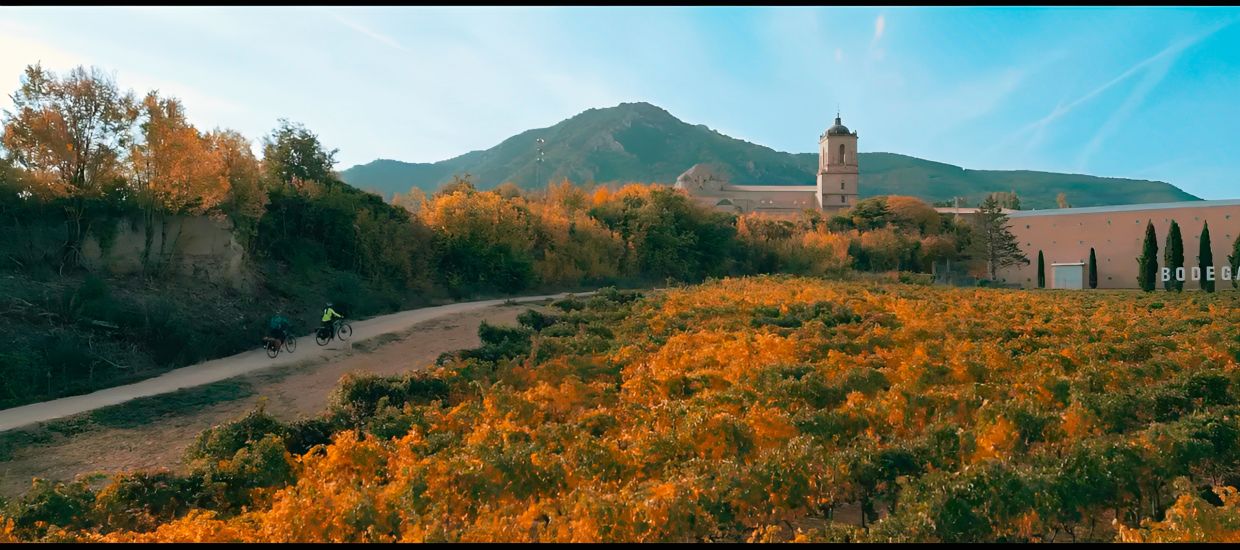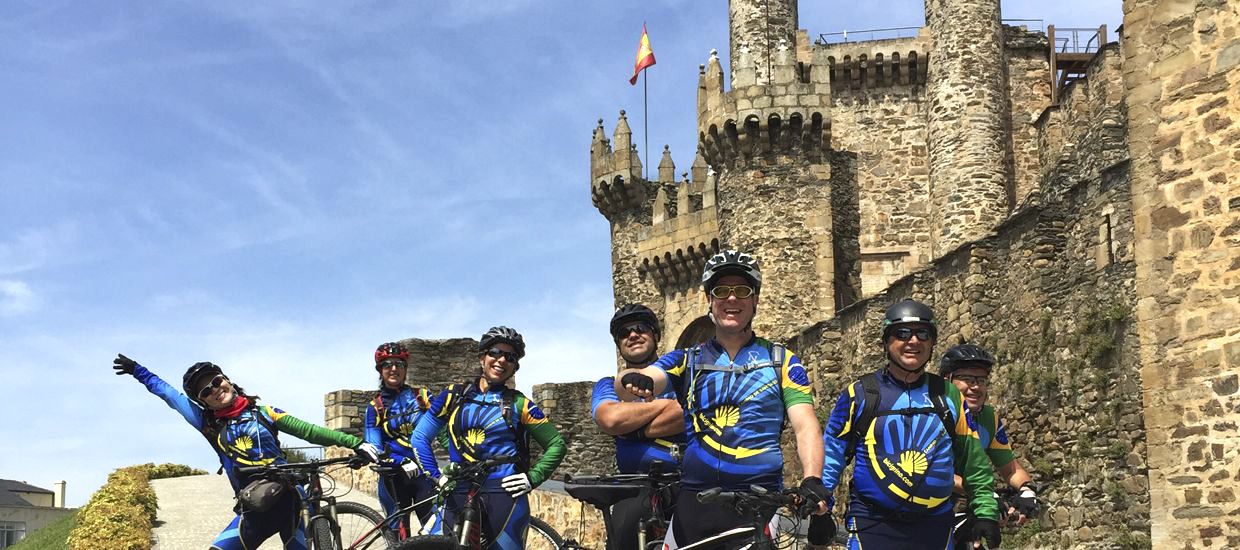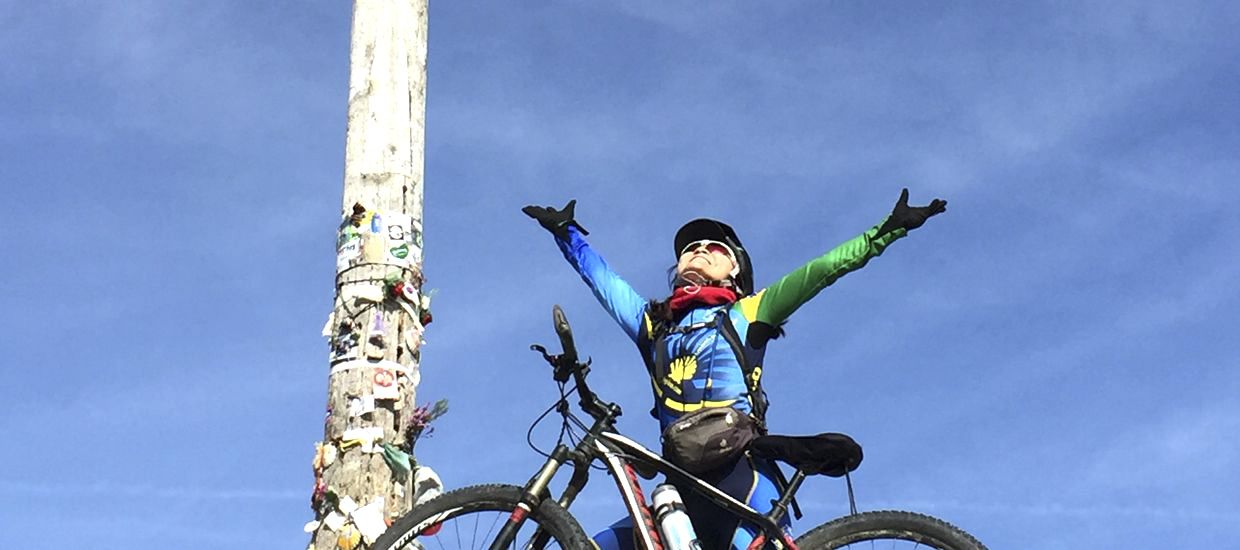Camino Salvador Tips
THE TEN COMMANDMENTS OF KILIKOLO
My now friend “Kilikolo”, one of the leading figures from ForoMTB, in which many of us are hooked by, has adapted with great sense of humor the ten commandments to the Camino de Santiago. I will transcribe them here:
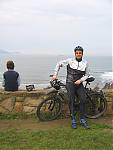
1. You will follow the arrows above all things.
2. You will not run miles in vain.
3. You will not rest even in holiday
4. You will call your father and your mother, and your wife in case you are married.
5. You will not get a flat tire.
6. You will not wear impure culottes.
7. You will not complain.
8. You will not tell false mileages when talking to others.
9. You will have no thoughts or desires to leave the Camino.
10. You will not covet the bicycles of others.
These 10 commandments are enclosed into two:
– You will pedal above all things.
– You will take care of saddlebags of others as they were your own.
TRANSPORTING YOUR BICYCLE
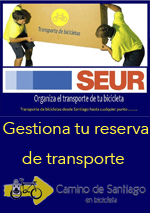
I have found that one of the concerns and frequently asked questions is how to take your bicycle to the start of the route and also how to transport it back home once the Camino is finished. Depending on where each person lives options vary greatly.
– You can carry the bycicle with you if traveling by bus but in this case it is recommended to check before traveling if the company in question accepts bicycles and coordinate with them the place reservation for your bicycle, because depending on the dates you may find that you go to catch the bus and if the bus is really crowded that day and therefore there is a lot of luggage, you may not be able to load your bicycle in the bus.
– If travelling by train, as of now in Spain it is only possible to carry bicycles on local and night trains if you reserve a cabin with “sleeping seat”. In long-distance trains you can not take your bicycle with you.
– Transporting the bike in a plane if we move through this conveyance depends from where we travel, it can be worth it especially if we come from an international destination to Spain, but if flying from places near the beginning of the route (Balearic Islands, or flights within Spain) taking our bike with us on the plane can be much more expensive and complex.
– In the case of doing the Camino in group, the most advisable is a rental car to transport people and bikes. Many car rental companies offer the service of picking up the car at the a start point and delivering it in a branch office of the destination without additional charges. If, as commented, several people make the Camino de Santiago and you want to organize the transport sharing expenses, you can transport yourselves at the start of the route and carry your bicyckes in the rental car.

– Lately one of the most practical, comfortable and economical options to transport bicycles are the transport services we promote through BICIGRINO online shop. Paying a small fee you can send your bike from home to anywhere in Spain and of course in the European Union .., with the transport service of Bicigrino you just have to reserve transportation and we will arrange everything so that the day you start the route your bike will be waiting at the starting location. We have arranged delivery points in Roncesvalles, Irun, Sevilla (main starting points of Camino de Santiago), but we can also deliver your bicycle to any location that you propose as long as there is a delegation of the transport agency or a hotel to keep the bicycle overnight.
– To transport your bicycle from Santiago to home it is as easy as booking it from our online shop even before the beginning of your journey (the voucher is valid for six months) and you will leave home with everything already organized and as soon as you enter Santiago de Compostela everything will be ready for you to deliver your bicycle (saddlebags included) to our correspondents and they will package it and send it to the point that you specify, thus being free to move around Santiago without worries. With this option of transporting your bicycle through an agency, as commented, you will not only have an advantageous price to arrange the transport but you will save a lot of packing worries and the nerves of queues to access buses or check-in at the airport for example. If you have any questions concerning this transportation service, as it is offered directly by us through this website, we can answer any inquiries directly through this e-mail: tomas@bicigrino.com
– Information on bus and taxi to get from Pamplona to Roncesvalles for this year 2012: the schedules for going up to Roncesvalles by bus are, Monday to Friday at 18:00 h, Saturday at 16:30 h and Sunday there is no bus service, so in this case the solution can be the taxi service: TELETAXI SAN FERMÍN, +34 948 232 300/ +34 948 351 335 and website www.taxipamplona.com.
CYCLE TOURING GUIDE
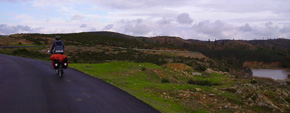
Rodadas is a website (in spanish language) about bicycle trips maintained by Álvaro Martín and Alicia Urrea. In this site you will find technical information about equipment, tips for travelling by bicycle, and other interesting subjects such as urban mobility or photography.
In my opinion, it is the best website about cycle tourism, where you can find very interesting information to venture to the Camino de Santiago or any other cycle tourism route.
In their website http://www.rodadas.net there is a huge quantity of tips and examples about any doubts that you may have relating to cycling and travelling with saddlebags. They even teach us how to “park a bicycle with saddlebags”, something that may seem obvious but as you can see has its technique and there are many ways to do it.
GPS USAGE

Actually the use of GPS device is not really necessary, especially in the French Way, which is well marked, and one of the most enjoyable things of the route is precisely to constantly search the yellow arrows. They are very easy to follow and the arrows are everywhere, on lampposts, trees, stones, facades of houses … in the most unlikely places.
The use of a GPS device is only justified in some areas affected by the works of roads and highways, in the passage of large cities (eg Leon signaling is chaotic and you will have a hard time if you try to follow the arrows) or in places where the villagers scramble to mark alternatives and splits of the path that pass through their town (there are several, one of the most divisive and fragrant is also at the exit of León).
GOOGLE EARTH
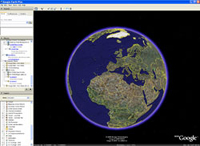
To open these files you need the free software GOOGLE EARTH, which you can download through this link:
http://www.google.es/intl/en_gb/earth/download/ge/agree.html
It is amazing what you can do with this software. There are areas where the detail of satellite is not very good yet, but in others the detail is spectacular. Google will be adding progressively more sharpness to all their maps.
That is why I give an special emphasis to the GPS section and the display of the route on Google Earth to get an idea of the route and those having navigators can take the route prepared to avoid slipping up of the path.
ROUTE ANALYZER

If you have downloaded a track from this website or have any other route in a GPS compatible format you can analyze the route with the following utility, even compare its hardness with other routes. Very useful.
DO NOT LET THE CAMINO BECOME A RACE
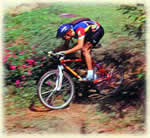
Camino de Santiago is not a race to the cathedral of Santiago de Compostela. You could make the mistake of wanting to get there before anyone else, completing it in less time that some acquaintance or something of the kind, but that would not be good. It is recommended to have a wide enough time margin to not have to do the journey in a hurry.
Avoid fixing an stage ending point during the journey. It is okay to have the intention of stopping at an specific place because you want to visit some place of interest or because the accommodations are better, but do not be obsessed with arriving necessarily.
One of the premises to enjoy the Camino is: Get up in the morning with no other concern than to move forward at the speed you feel appropriate, eating when you are hungry and resting when you are tired. If you achieve this, you will fully enjoy you journey.
TWO ARE A CROWD
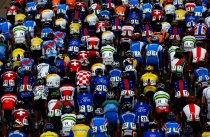
Perhaps the expression “two are a crowd” is a bit exaggerated, but with this I mean that from my particular point of view it is always better to do the Camino de Santiago alone. I have to clarify that this has to be only applied in terms of your environment, your circle of lifelong friends . If you go alone, as soon as you start the Camino (especially the French Way) you will be with many people who coincide with you. You will never be alone. But people who accompany you and with who you will share your adventure will be unknown people until then, and that is what lets you live one of the most rewarding experiences of the Way of St James, the contact with people from halfway around the world which will share with you their experiences and illusions.
Large groups are closed in themselves and do not let other people interact with them. For example at the dinner table, you will fill the table just with the people of the group and other pilgrims / bike-pilgrims will not sit to eat with you.
In any case, in the loneliest routes, such as Vía de la Plata or Northern Way, it is recommended the company of someone from the beginning, because as I said those routes are not that busy. “In this case two are enough”.
If traveling alone, you will have more possibilities to do another Camino (journey) more interesting than the physical, the journey of your inner self. I used to travel alone all day, stopping to talk with whom gave me conversation and looking for company in the evenings / nights at hostel. Every day I had what I called “the character of the way” or “Angels of the way” that allowed me to share with them conversations, food and experiences that will remain forever as a wonderful experience in my memory.
END OF STAGES
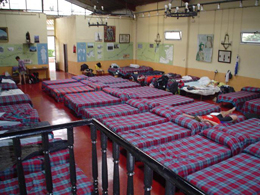
Usually almost all guides are designed for walking pilgrims and often they end stages in the same places. Since stages are programmed between 25 and 30 km It is best not to end the stage in these sites to avoid the problem of not finding a hostel to stay.
As with all rules there are exceptions and sometimes some guides program the end of stages using criteria such as cities full of monuments and that are worth visiting in depth, if they are provincial capitals often there are hostels with many places, although they can be very saturated. Is up to you to sacrifice yourself a bit and visit the city quietly and calmly, giving up the comfort.
It is also advisable to finish the stage before a hard ascent, so the next day we can start the climb with renewed vigor. For example it would be nice to stay overnight in Rabanal del Camino before the climb to the Iron Cross. Also in one of the villages before O Cebreiro, for example Trabadelo, Vega de Valcarce or Ruitelán.
FOOD AND HYDRATION

It is very important, especially if we do the route in summer, taking maximum care of hydration. We must be well prepared with liquid at all times. Sport drinks are good but common water can also be used perfectly and in the French Way in most sections we can easily find fountains where fill our cans. It is advisable to bring two cans on our bicycle.
Powdered lemon or orange drinks such as TANG, besides having sugars that can help us to recover easily, also give a refreshing taste to the water and make it more palatable. Another advantage is that they weigh nearly nothing and with a package we can prepare up to 2 liters of drink. This way we will avoid carrying too much weight.
It is always better to drink before thirst and make small gulps during our tour.
As for food it is best to have a good breakfast. Eat a sandwich or snack during the morning and reserve for a great meal at afternoon / evening. Everywhere you will find the typical pilgrim menu for between 6 and 10 euros, which normally consists of two dishes and dessert.
It is advised to not have dinner too late in order to not go to bed freshly eaten, restaurants usually cater to the schedules of the hostels (they close at 10 pm) and serve dinner from 7 pm.
During the tour you should be stocked with occasional snacks, to eat some of them from time to time and not get excessively tired, the most habitual and recommended are muesley bars, nuts, a banana, dates…
It is also good to carry some chocolate bars, or a simple lump of sugar (not to eat it directly but to suck it) for moments of high effort in order to regain strength quickly. Needless to say that the glucose packages that are sold specifically for this purpose will also be good and it would not hurt to be prepared with 3 or 4 packages for the entire journey. We will already need at least one at the rise of Sant Jean Pied de Port and for sure another at O Cebreiro.
A MATTER OF WEIGHT
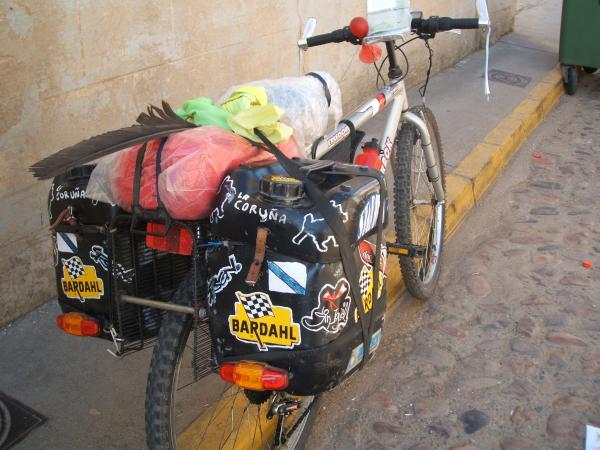
Weight is a huge factor in our adventure. It is convenient to be totally equipped and prepared for any contingency. Also depending on the time of year it is important to bring appropriate clothing to protect against bad weather.
But we must not fall into the trap of trying to carry too much unnecessary stuff. It is important to know that in the French Way towns are very close to each other and almost all have the necessary services. So if for example we have to buy any medication or batteries it will not be difficult to find them in any town, and if we buy things when we need them we avoid having to carry unnecessary stuff for the entire route.
The weight will condition us in our progress and we should get used to this. In rough terrain it is okay to get off the bike, for example in a rocky climb which you would pass smoothly without saddlebags.
You have to be very conservative in terms of rhythms and cadences of pedaling. Always reserve some energy, Camino de Santiago is long. Learn to relax and enjoy the scenery. Take pictures, pictures and more pictures. Talk to people and collect good memories from this wonderful experience.
CIVILITY AND CLEANLINESS

Camino de Santiago is a busy route, it is needless to say that before us and also later, those same rocks, roads, trees … will be admired and frequented by others. It is one of the most clean and free of debris places that can be found throughout Spain. Pilgrims usually behave sensibly and are polite people, making this route a role model in everyday life.
Be consequent and very careful not to drop anything on the floor and keep everything as clean and neat as possible. Camino de Santiago will also be a wonderful route for others after us.
